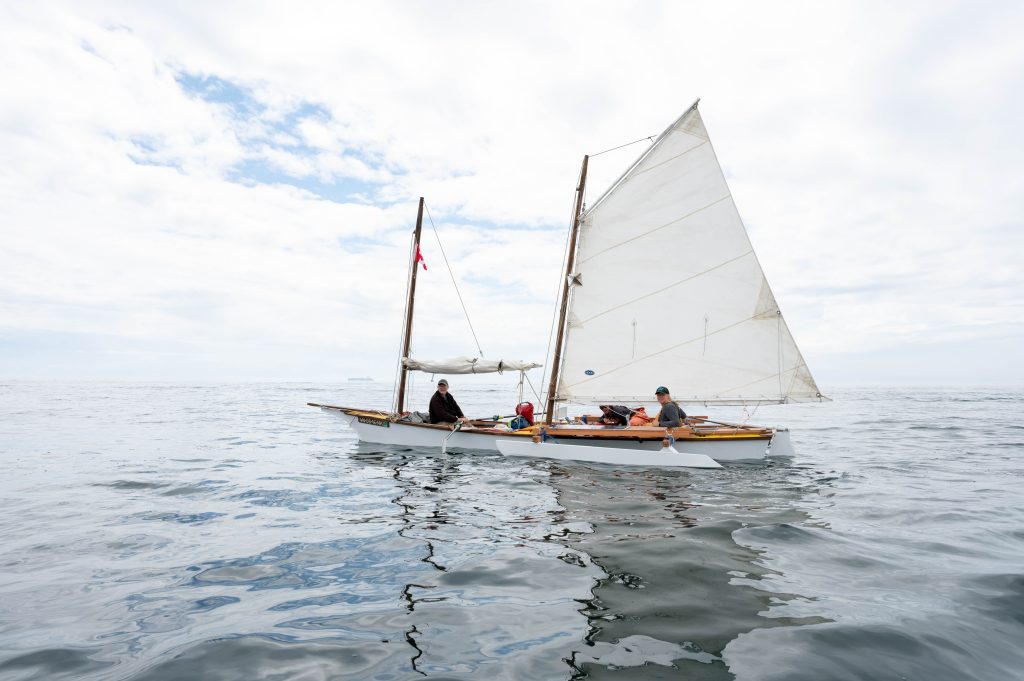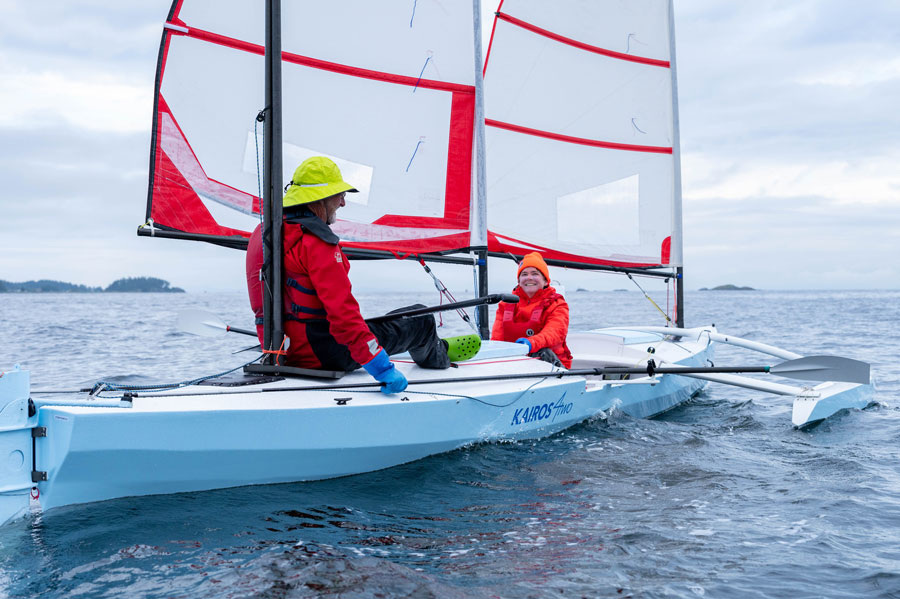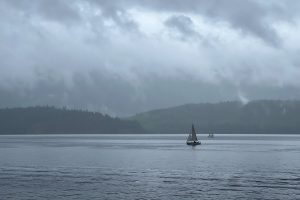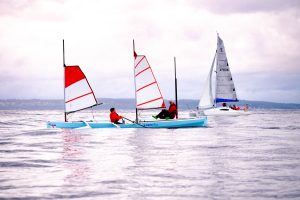Field Report
photo: Team Sockeye Voyages by Rebecca Ross
Fix Oder Nix and Sockeye Voyages. Two teams who know this race differently than any others. At 20 days they are the only ones left on the field, with the Grim Sweeper at Rennison Island by noon today. The best communication only gives up snippets, like puzzle pieces, to assemble their experiences into complete pictures.
“Crew tired”
“Going on”
But today, we will take the uncharacteristic path of not rearranging a few words into paragraphs of extemporized possibility. We are going to tell it like it is because failure is a word on our mind. (Abuse the word failure, and it gets bad results. It requires some context and definition.) The term will be used by teams who raced this year, teams who exited days ago, or even as far back as the Proving Ground. Others will have made it all the way to Ketchikan and still feel an emptiness, unsatisfied with their result. What’s often on the scorecard has little to do with expectation, and failure is deeply personal. Consider this a panegyric for all teams who choose what goalpost to aim for and decide if they made their mark.
Whether you finish in Ketchikan, Bella Bella, Campbell River, or Dungeness Spit, Race to Alaska has goals and you reach them or you don’t. In discussing it, we came up with nothing better than we’ve said before and so are offering up a cut from 2016.
“In the age of self-esteem parenting where everyone gets a ribbon, failure is not something we often talk about. We turn shelves into shrines to heap on the symbols of our successes. We frame the certificates, we never wear our failures on our sleeves, never bring them up in job interviews, or when we’re trying to snag a date with that hottie who is way out of our league. Failure is something we avoid as often as we rebrand it to simultaneously soften the blow and dilute its meaning. Challenge, teachable moment, pivot point, beta version.
Failure is a concept that holds that same strain of loaded discomfort as talking to someone about their terminal illness. It’s uncomfortable and smacks of taboo. Say it right now, “I failed.” Shrink inward a little bit, don’t you? Your voice trails off and eyes glance away to avoid the gaze of the reflection in your screen. Even in this fiction failure, it’s as loaded as it is deeply ingrained, despite the reality that the only way to never fail is to never try or to make your attempts so smug in their banality that they don’t matter. Pulling up aces with a loaded deck might gain you the chips on the table but it isn’t winning. Not really.
Here at R2AK Central, we celebrate those who try and triumph; it’s no small thing to prepare and train and then struggle to the other end. With equal voice we try to celebrate the failures on the course because they are evidence of the all-out ambition we hoped this race would inspire. A hard fought failure might not be evidence that you had the best theory, but it is the only time when you look yourself in the eye and know that you gave it your all, left everything you had on the field. Failure of that sort of intrepid exhaustion is an effort worthy of celebration. We celebrate failure at the R2AK because other than $10,000 for one, and a fancy set of steak knives for another, the R2AK is really about the challenge—and for a challenge to be real, failure has to be a possibility.
Fail well, fail boldly, fail safe, grow.”
If you think we’re talking only about the teams now on the field, then it’s just our bad editorial timing. We’re not trying to draw the curtain early. 20 days of occasional carnage has brought us to this threshold, not two teams. In fact, barring an instantaneous spawn of Scylla and Charybdis in the middle of Dixon Entrance, we’re looking at two of the most deserving bell ringers in the race. But whether the town’s bookies back our bet or not, whether a team eddies out at Prince Rupert or completes the 750 miles, the tally of success and failure will be theirs to make alone.
First and last Team Fix Oder Nix by Rebecca Ross, second Teams Fire Escape and Sockeye Voyages by Sierra Marantz
Field Report: Bella Bella
By Lynnette Oostmeyer, Field Reporter
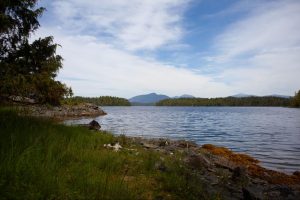 To me, Bella Bella, BC, simply marked a place in the race where I would no longer have the option to spend time with the teams. I was told that if I wanted to camp with anyone, it had to be before Bella Bella—that is where our resources ended. Because I knew from the start that I would not set eyes on that place, I never gave it much more attention than being aware of its position on the race course. After our, admittedly luxurious, support boat broke down in the Broughton Islands, I figured I would just be heading to Ketchikan to wait for teams there. But a phone call later, I found myself with a plan to travel to Bella Bella. I suddenly felt very undereducated about this place I would be traveling to, so I did what every teacher always tells you not to do, I read the Wikipedia page.
To me, Bella Bella, BC, simply marked a place in the race where I would no longer have the option to spend time with the teams. I was told that if I wanted to camp with anyone, it had to be before Bella Bella—that is where our resources ended. Because I knew from the start that I would not set eyes on that place, I never gave it much more attention than being aware of its position on the race course. After our, admittedly luxurious, support boat broke down in the Broughton Islands, I figured I would just be heading to Ketchikan to wait for teams there. But a phone call later, I found myself with a plan to travel to Bella Bella. I suddenly felt very undereducated about this place I would be traveling to, so I did what every teacher always tells you not to do, I read the Wikipedia page.
Two of the six paragraphs focused on the moving back and forth of the post office location and how it affected the town name. The rest shallowly explained where the town is situated along the Inside Passage and the industries that have come and gone over the years. It labeled the land as “an unincorporated community and Indian reserve.” As those teachers would have predicted, I learned very little from the page, and definitely did not have a good grasp on the Heiltsuk people that lived there… Keep Reading
